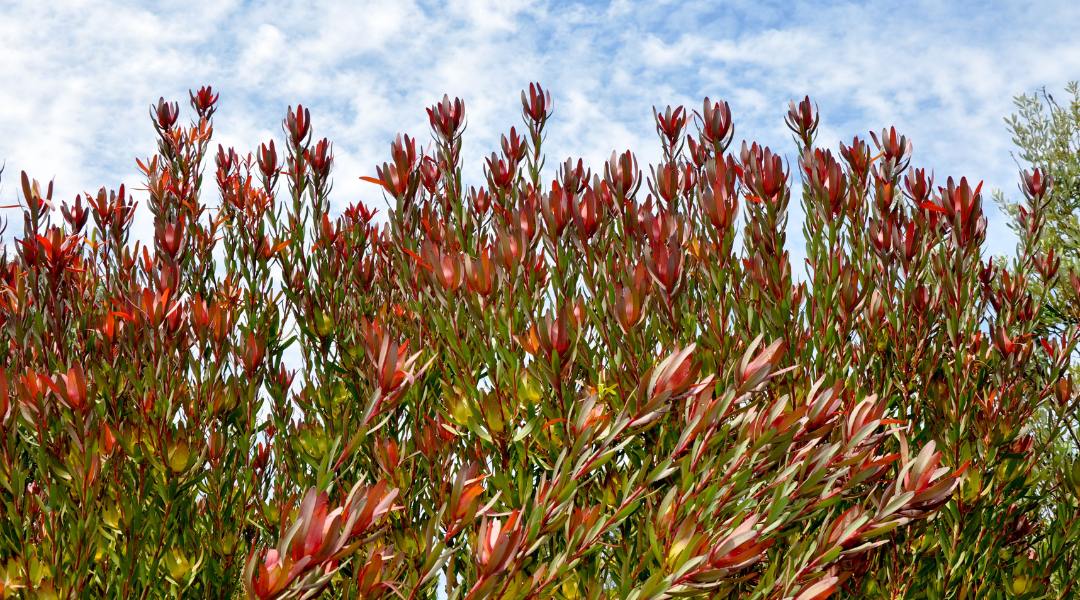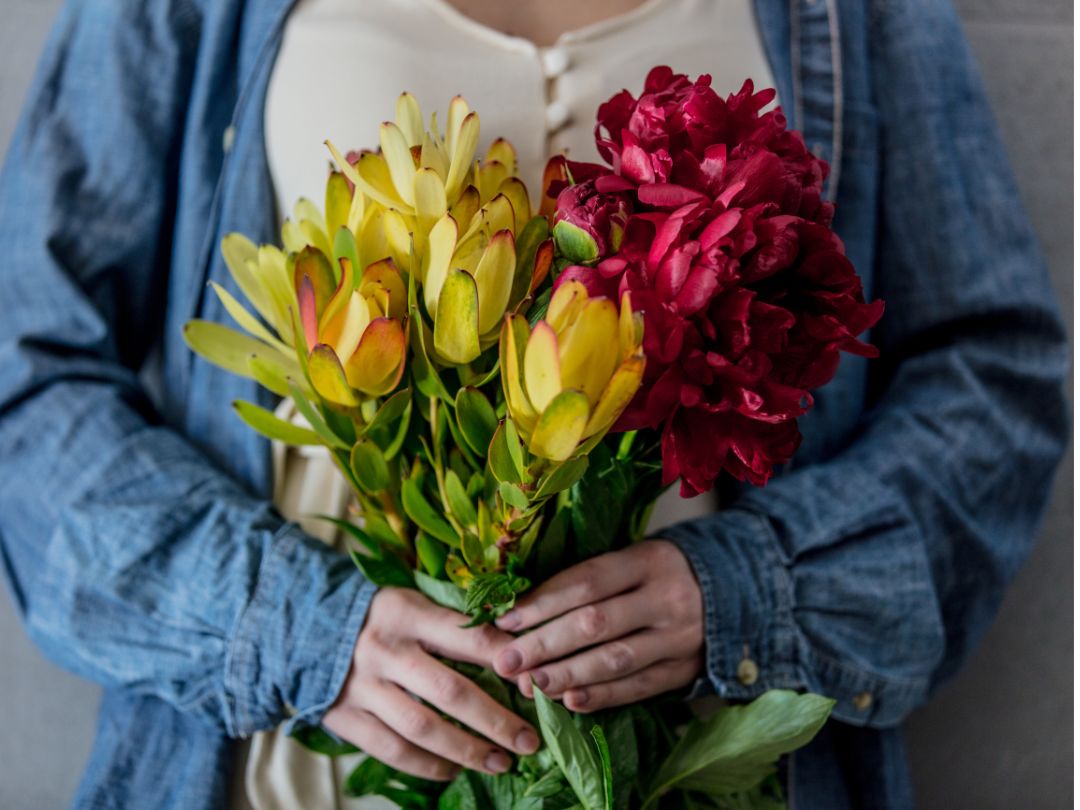Leucadendron (lew-kuh-Den-dron) is one of those plants that I seldom use the common name, Conebush, for. I simply refer to it as Leucadendron, and then the type, which is usually descriptive as to its color.
While Leucadendron is a genus of about 80 species, there are only a few that I can commonly source and use in local gardens. Some are more yellow, like Leucadendron ‘Goldstrike,’ and then you have your striking sunset and darker colors.
When I’m specifying a plant for a garden, I check with my local growers to see what’s available. This journey often leads me to Monrovia Nursery and San Marcos Nursery. These are two large growers in my area that have great websites with images and information about plants that I know will grow in my zone. I also know these large growers supply my local nurseries.
Right now, I can find six different types of Leucadendron online at Monrovia. While this is a small percentage of what the genus has to offer, I know it will represent those plants that will be dependable to specify and grow. This nursery is growing Jester Conebush (Leucadendron ‘Jester’), Safari Goldstrike Yellow Conebush (Leucadendron ‘Safari Goldstrike’), Ebony Conebush (Leucadendron salignum x laureolum ‘Ebony’), Safari Sunset Conebush (Leucadendron ‘Safari Sunset’), Royal Hawaiian Hawaii Magic Conebush (Leucadendron hybrid ‘Hawaii Magic’), and Silver Cone Galpin’s Conebush (Leucadendron galpinii ‘Silver Cone’). Quite a nice and varied selection.
Our friends at San Marcos Growers have 18 different Leucadendron. But when you start to look closely, a lot of them (8!) are no longer in production—so those might not be plants I can find, and would certainly question before planting. Why would the nursery stop growing this plant? Does it not grow well in my area?
Just to enjoy the pure scope of things, San Marcos Growers offers different colors and sizes of Leucadendron—some that can be small bushes and others that reach the size of trees. Clearly, it’s important for you to know the size a plant will get when fully grown.
Like Monrovia, San Marcos Nursery grows some of my favorites, including Leucadendron ‘Safari Sunset’, Leucadendron ‘Jester’, and Leucadendron ‘Ebony.’
For this blog post, I’ll keep my focus on these and a few more favorites which are the size of a medium to large upright bush.
Leucadendron ‘Goldstrike’
Size: Up to 6’ tall by 6’ wide
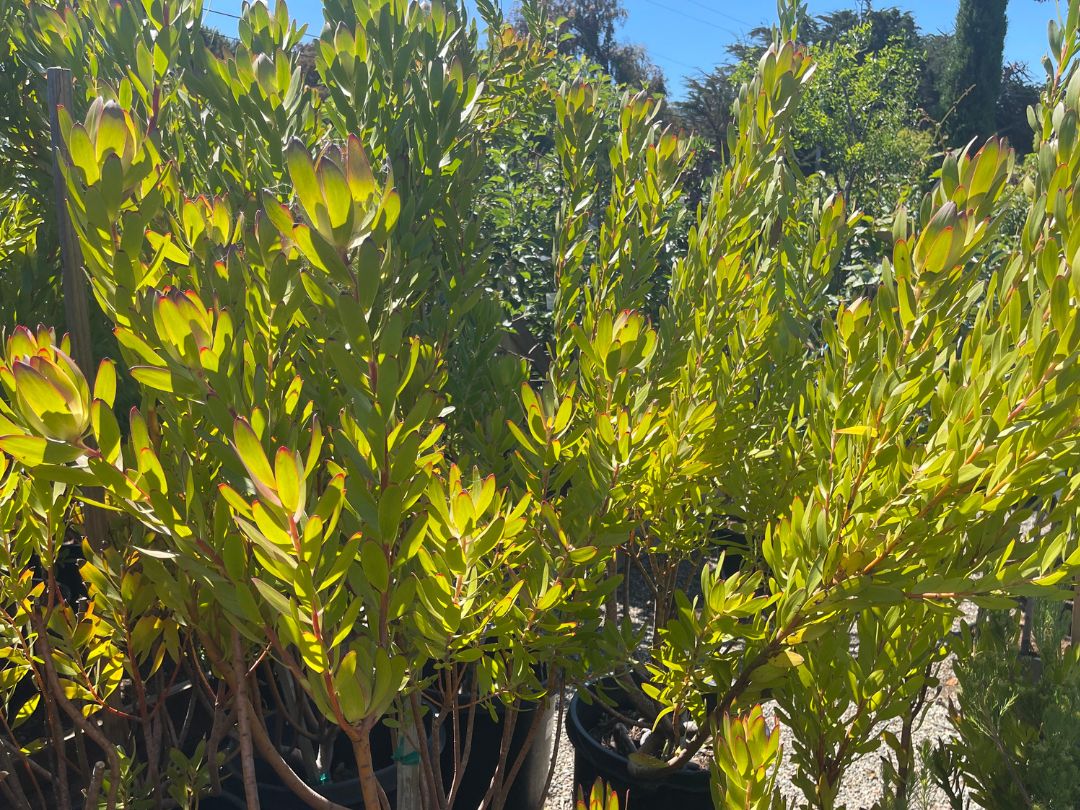
This plant is also referred to as Leucadendron ‘Safari Goldstrike’ and is a smaller yellow version of Leucadendron ‘Safari Sunset’. It’s an excellent cut flower and cut foliage plant. This Conebush has yellow blooms in late winter and spring. It looks great when combined with ‘Safari Sunset’. It also looks great when the sun hits it.
Leucadendron ‘Inca Gold’
Size: Up to 6’ tall and 6’ wide
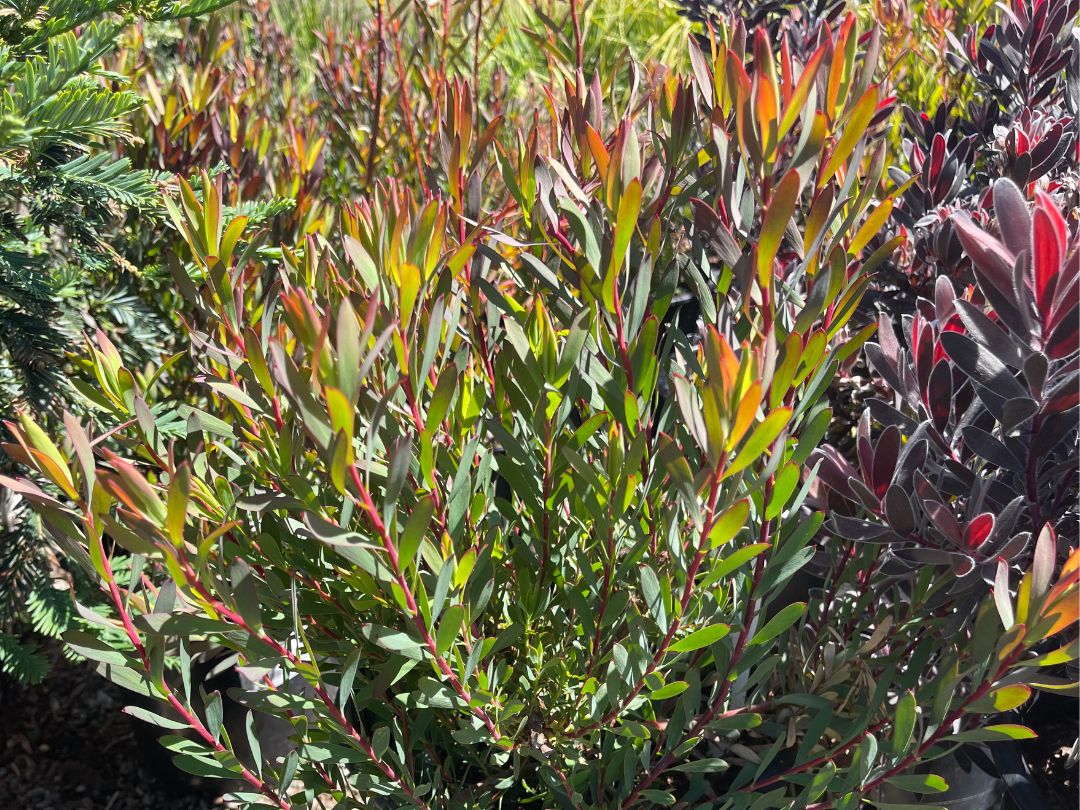
This Conebush has more varied colors in its leaves and bright yellow flowers. To be clear, the flower of Leucandendron is actually small—it’s the bracts that form at the tip of the branch that are considered the bloom. Although this plant was not in bloom when I took this picture, it’s still just stunning.
Leucadendron ‘Safari Sunset’
Size: Up to 10’ tall and 8’ wide
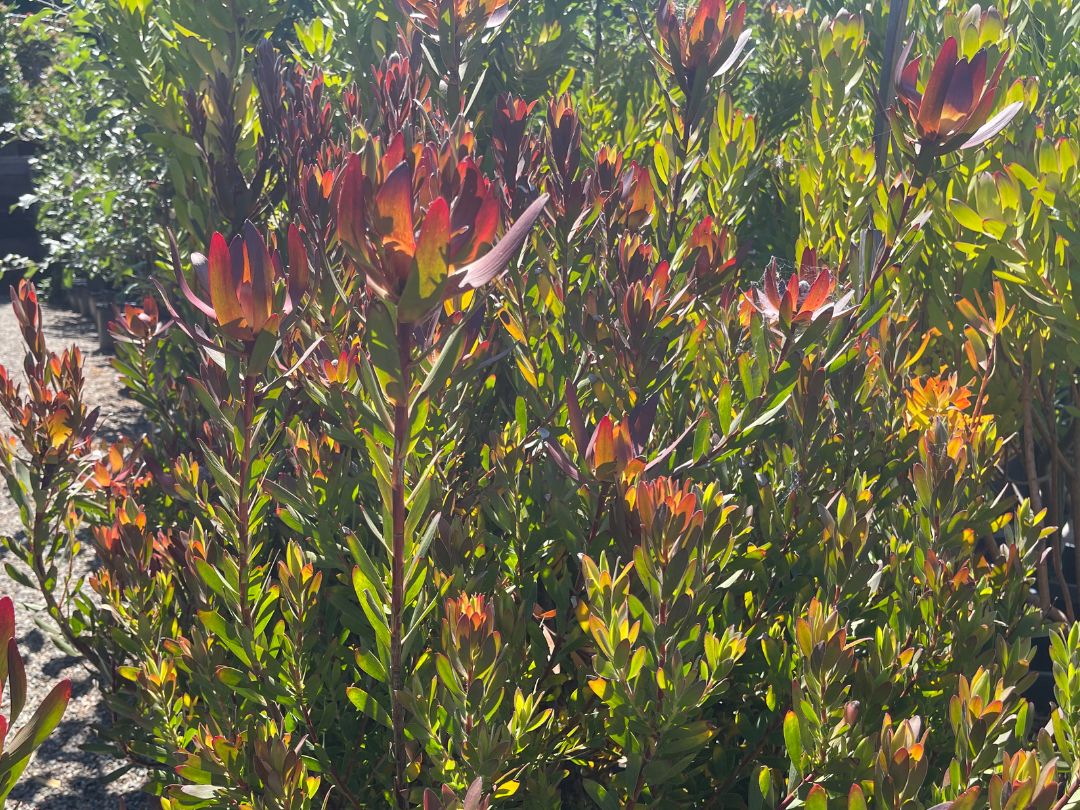
My favorite Leucadendron. We’re really starting to get more color in the foliage, which is green with a red-purple tinge. Yes! The foliage! How great is that? Color in the garden that’s not dependent on the seasons. And romantic sunset hues adding atmosphere to your yard. This plant flowers in the spring and has red and yellow blooms.
Again, this flower is not what you would consider a typical flower, it’s more an extension of the leaf, with a fluffy yellow cloud cupped by leaves. It’s a unique, popular, and long-lasting cut flower. It’s used more like a decorative cut green (if by a “green,” we mean reddish-purple leaves with a yellow center).
Leucadendron ‘Safari Sunset’ has proved hardy in my garden and other gardens I’ve designed. As you can tell from the description, this is not a small plant—so make sure to give it room.
Leucadendron ‘Jester’
Size: Up to 4’ tall 5’ wide
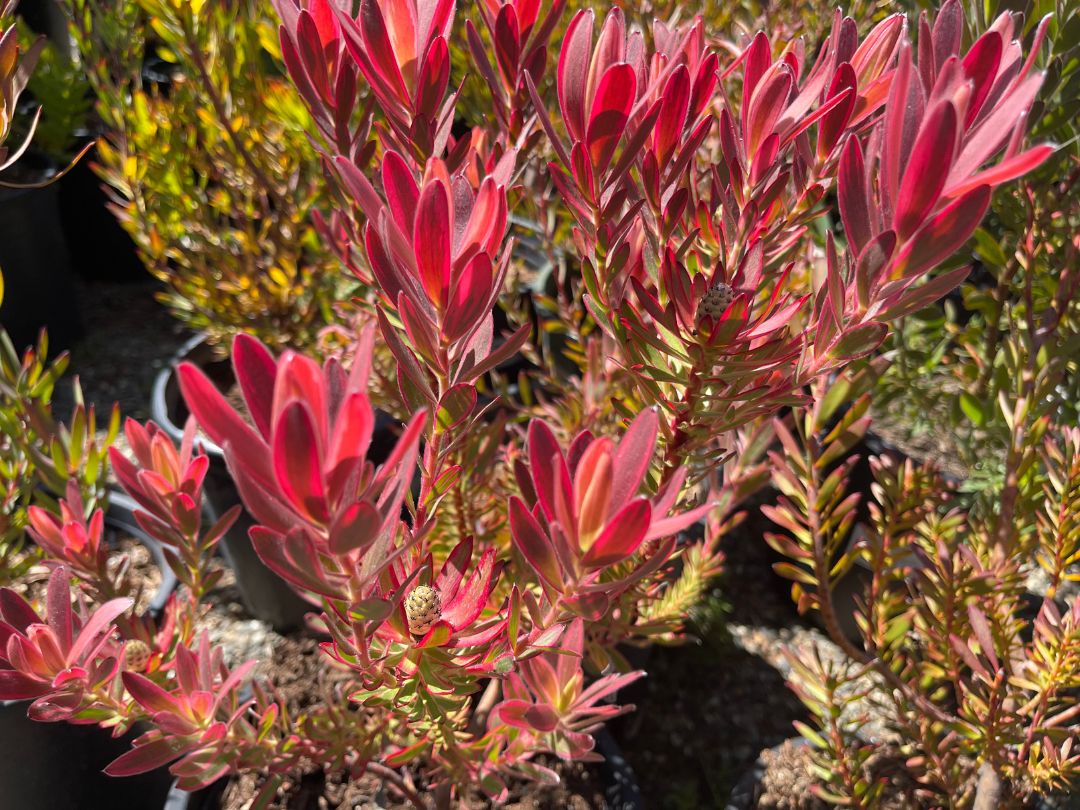
If the size of Leucadendron ‘Safari Sunset’ is a bit large, you can try this more compact bright Conebush. This evergreen shrub, according to San Marcos Nursery, is “flushed seasonally with red leaf margins and orange-red leaves in fall and plum-red new growth in spring.” Making it more or less colorful all year.
The yellow flowers of Leucadendron ‘Jester’ bloom in winter and spring.
Leucadendron ‘Ebony’
Size: Up to 6’ tall and 6’ wide
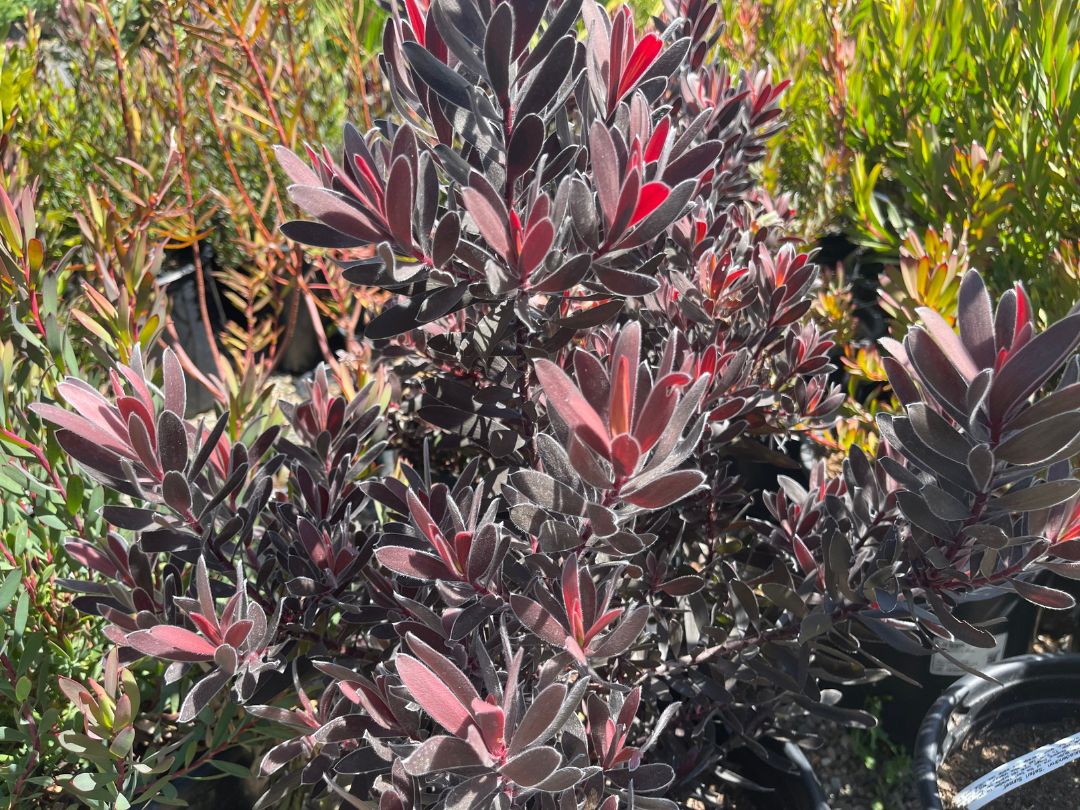
For drama in the garden, look no further! Black fuzz-ish foliage! Bright red flower bracts light up the plant in the winter.
Inevitably, if you use this plant, you’ll also want to know other purple-black plants to balance with the dark foliage of Leucadendron ‘Ebony’. Other dark leaved plants that take sun and low water include Echeveria ‘Serrano’, Aeonium ‘Zwartkop’, and Phormium ‘Mats Merlot’.
It’s also the perfect plant for foliage contrast (it’s great next to lime green).
In the Garden
Leucadendron is often a very colorful and low maintenance plant. The South African native has low water needs, so it works perfectly in the Southern California climate.
Some nurseries say this plant can handle clay soils as well as alkalinity. I’m going to agree with the sources that say Conebush doesn’t care much for clay soils. Clay soils appear to stunt this plant’s growth. Leucadendrons like fast-draining soil.
This dramatic plant provides visual interest and looks good year-round. Leucadendron needs a sunny spot, soil that doesn’t hold water at the plant’s roots, and room to grow. To help get a fuller plant, you can cut it back some after it flowers.
Conebush also needs to be in a humid and warm climate—no freezing temperatures for this plant. If you’re outside zones 9-11, you’ll need to bring the plant inside.
Good plants to combine with Leucadendron are Phormium, Kangaroo Paw, Agave, and Aeonium.
Leucadendron as a Cut Flower
Back to its use as a cut flower! The average vase life of a properly picked, processed, and maintained cut Leucadendron flower is about 26 days. This flower lasts almost an entire month—it’s one of the longest lasting cut flowers. Again, I’m using the term ‘flower’ a bit loosely, as these are mostly showy bracts.
I can just hear my blog partner Karen asking what I mean by ‘processed flower’. Processing is the rather sterile word used to describe preparing a flower to be used in a vase. It entails a clean cut of the stem at an angle, and removing any leaves that will touch the water in the vase.
You can also prepare this flower for drying, and use it as a dried flower instead. It takes about three weeks for the flower to dry.
Are you wondering what the longest lasting cut flower is? It’s the Laceleaf (Antherium), which can last up to 42 days. For a list of long lasting flowers, check out Florally. This florist has a lovely Seasonal Native flower bouquet that seems to always use Leucadendron. You just need to be in certain areas of Australia to order it. This plant is not a native to Australia, but does look lovely with the native banksia, wax flowers, billy buttons, and eucalyptus.
As I mentioned before, I do think Leucadendron ‘Safari Sunset’ is the most used and available cut Leucadendron flower. To get a good look at some other brilliant Leucadendron flowers, Resendiz Brothers and Proteaflora in Australia have many beautiful options to enjoy!
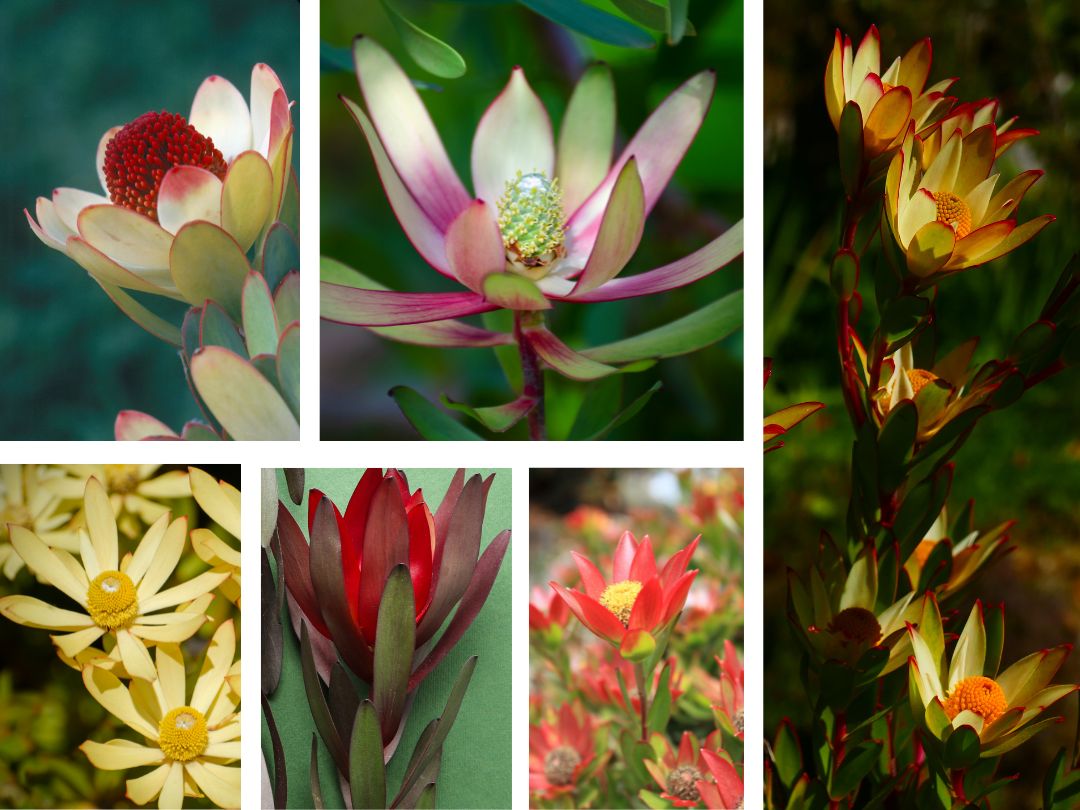
There are so many to choose from!
We partner with select companies whose products and/or services we love. Some of the links on this page may be affiliate links. If you purchase an item using our affiliate link, we may receive a small commission (at no added cost to you). We appreciate your support.

